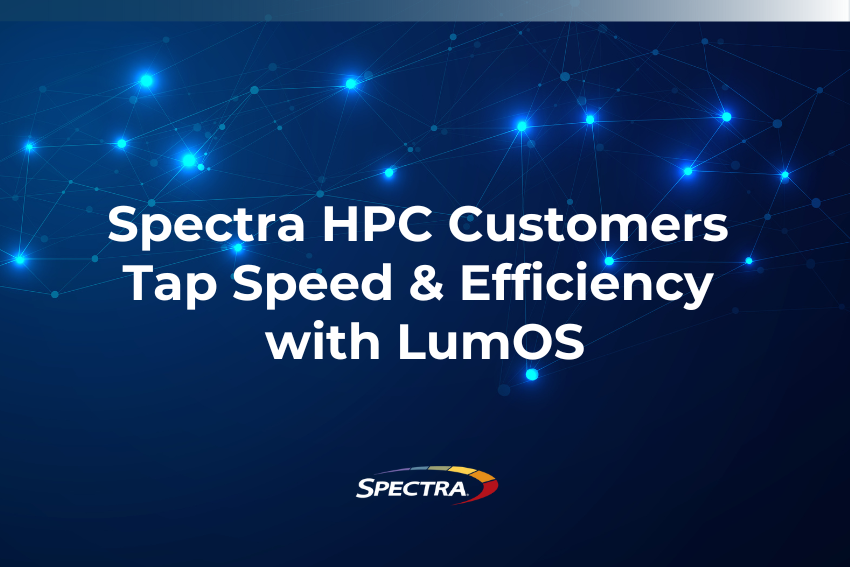
By Phil Wandrei
Product Marketing Manager, Spectra Logic
In the ever-evolving landscape of enterprise data storage, efficiency, scalability and cost management remain top priorities. For decades, organizations managing vast data archives have relied on Fibre Channel to connect servers and tape storage—an approach that, while effective, comes with financial and operational complexities. But as storage demands grow, a shift is underway. A new connectivity paradigm is emerging—one that challenges long-held assumptions about how tape storage infrastructures should be built.
The Case for Optical SAS: Breaking Free from Traditional Constraints
Serial-Attached SCSI (SAS) has long been a foundational element of enterprise storage, primarily at the device level, linking servers to disk drives and JBOD expansion shelves. However, SAS has historically been constrained by copper cabling, limiting its connectivity to just a few meters. This restriction has made Fibre Channel the default choice for larger tape environments despite its higher costs, specialized administration requirements and infrastructure demands.
The introduction of Optical SAS switching technology redefines what is possible. By leveraging active optical cables, SAS connectivity can now extend up to 100 meters, enabling new possibilities for data center design. The implications of this are significant – organizations can now achieve the scale and flexibility of Fibre Channel without the cost or complexity.
A Game Changer for Tape Storage Infrastructure
Optical SAS switching introduces a range of benefits that fundamentally shift how tape storage environments are architected:
Extended Distance, Enhanced Scalability
Optical SAS switches can extend connectivity across racks, entire data centers and even between buildings, covering up to 10,000 m² of floor space. With cascading support, multiple switches can be linked to scale as needed, expanding the number of fabric connections or extending connection distances beyond the limits of a single switch.
Cost Efficiency Without Compromise
Organizations can lower infrastructure costs by up to 70% per port by reducing reliance on Fibre Channel. Additionally, some Optical SAS switches can support legacy and modern tape technologies (e.g., LTO-6 through LTO-9 or IBM TS1160/TS1170 drives), ensuring existing tape investments remain viable.
Performance Optimization
Optical SAS switches such as the recently announced Spectra Logic OSW-2400 can deliver high-performance connectivity. For example, a 12-port switch with 48 SAS-4 lanes can provide up to 1.08 Tb/s of total bandwidth. Additionally, through support for End Device Frame Buffering (EDFB), optimal data flow is assured for slower legacy SAS devices, improving efficiency and enabling up to 50% faster transfer rates.
Seamless Deployment and Management
Unlike Fibre Channel, which requires specialized expertise, Optical SAS switches can operate with plug-and-play simplicity. Organizations can quickly deploy the technology without complex configuration, significantly reducing the learning curve and operational overhead.
Security and Reliability at Scale
Enterprise environments demand secure and resilient connectivity. Optical SAS switches can integrate advanced zoning capabilities (T10 and port-to-port) to segment data access, while switches like the OSW-2400 also offer redundant, hot-swappable power supplies and fans to ensure uninterrupted operations.
A Strategic Shift for Modern Data Centers
For IT leaders and storage architects, the transition to Optical SAS switching represents more than just a technological upgrade—it is a strategic move toward greater agility, cost efficiency and futureproofing. Organizations that embrace this shift can expect:
- Lower total cost of ownership by eliminating expensive Fibre Channel dependencies.
- Greater operational flexibility with extended SAS reach across large-scale data centers.
- Simplified infrastructure management with a technology that does not require specialized expertise.
- Enhanced data security and compliance with built-in zoning controls.
As storage infrastructures continue to evolve, the question is no longer whether Optical SAS technology will disrupt traditional connectivity models—it is how quickly organizations will capitalize on its advantages. The shift is already happening. The future of tape storage connectivity has arrived.
Spectra Logic: Pioneering the Future of Tape Connectivity
Spectra Logic is leading this transformation with the industry’s first 24G Optical SAS Switch. The Spectra OSW-2400 Optical SAS Switch represents a groundbreaking data center tape storage connectivity advancement. By eliminating traditional Fibre Channel dependencies and extending SAS connectivity across greater distances, this innovation delivers unparalleled scalability, cost efficiency and ease of deployment.
For more information, visit www.spectralogic.com/spectra-optical-sas-switch.






